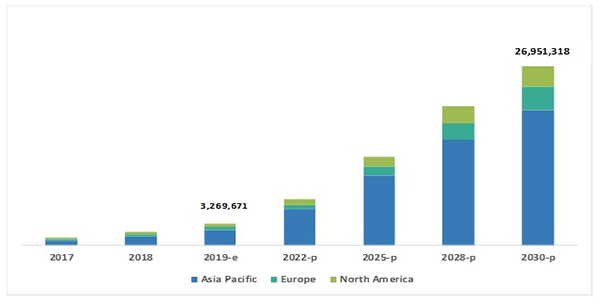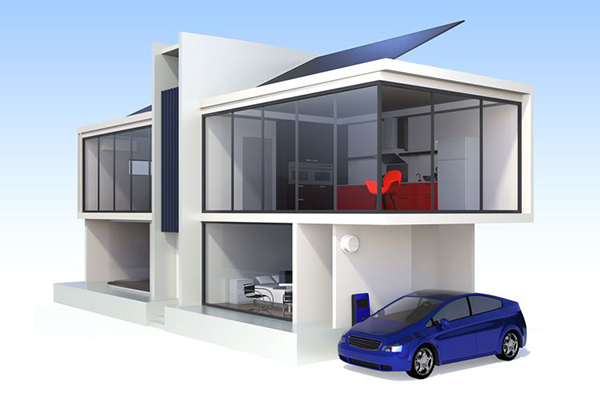In recent years we have seen a huge change in the automotive industry. Consumers are more and more willing to buy more sustainable electric vehicles and many other market players are participating in this revolution, for example charging electric cars.
First, the European Commission has set out clear pathways to an economy that aims for net zero emissions from transport by 2050.
Secondly, new organisations are being created that emphasise the benefits of this change. A good example is the Electromobility Platform, which aims to transport people and goods using sustainable electricity. The Electromobility Platform estimates that 1 million new jobs will be created in the e-mobility sector by 2030 and, more importantly, that the cost of oil in Europe will be reduced by €1 billion a day.

Actual and expected growth of the electric vehicle market by region (source: MarketsandMarkets - Electric Vehicle Market Report).
Finally, research indicates a significant growth of the electric vehicle market in the coming years. MarketsandMarkets estimates that 27 million electric vehicles will be sold worldwide by 2030. This compares with less than 9 million electric cars sold by the end of 2020.
Do the brakes still work?
Despite the positive signs, there are also issues holding back growth, mainly related to CO2 emissions from building electric vehicles and the price of cars. For a variety of reasons, the current cost of electric cars is higher than that of internal combustion engine cars, and many customers continue to choose other alternatives. As a general rule, if you drive less than 15,000 km per year, it is cheaper to buy a non-electric car. In addition, the CO2 emissions from the production of an electric car, including the battery and the car, are higher than for an internal combustion car.
There are other factors that may deter people from electric cars, such as the lack of charging stations, the materials used in the batteries and range/mileage concerns. However, once economies of scale are achieved, prices and CO2 emissions will fall and e-mobility will become ubiquitous.
Smart charging with KNX
The KNX Association considers the integration of electric chargers as an important part of energy management in homes and buildings, and has therefore extended the scope of KNX technology by integrating charging stations into the KNX energy management system. There are already KNX devices developed by KNX members that allow the connection of several brands of charging stations to KNX, including stations from ABB, ABL, ebee, KEBA, Mennekes and Stöhr, as well as other connecting devices and charging brands.
The new integration tools include features such as:
- Shows if the charging station is occupied or free.
- Display charging progress with different mobile devices.
- Set a specific charging time or limit charging power depending on the tariff on the grid, current own energy production or consumption in the home or building.
- Monitoring and reporting of the total energy consumption from the last charge and other important data such as fault reporting, which is very useful for building administrators and users.
- Finally, it goes without saying that these new products and features benefit from protection against hackers thanks to KNX Secure.
Summary
The market for electric vehicles is clearly growing, and the need to charge vehicles at work or at home will also increase as the market expands. KNX intelligently and securely integrates the charging of electric cars into the building's energy management system, which already covers all aspects of energy consumption and production.
Casto Cañavate
KNX Association

